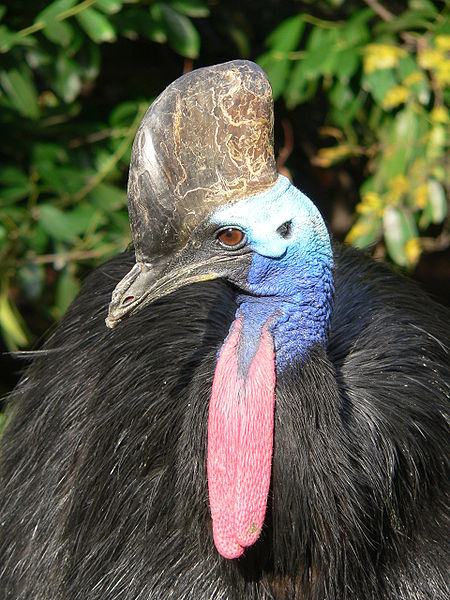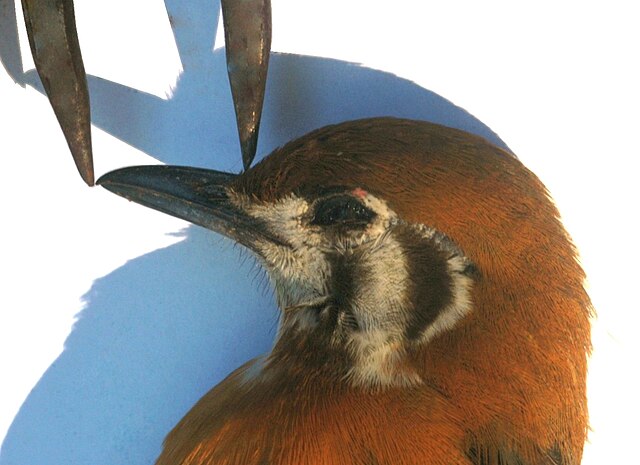A casque is an anatomical feature found in some species of birds, reptiles, and amphibians. In birds, it is an enlargement of the bones of the upper mandible or the skull, either on the front of the face, or the top of the head, or both. The casque has been hypothesized to serve as a visual cue to a bird's sex, state of maturity, or social status; as reinforcement to the beak's structure; or as a resonance chamber, enhancing calls. In addition, they may be used in combat with other members of the same species, in the gathering of food, or in thermoregulation.
Like most hornbills, this male great hornbill has a distinctive casque on its upper mandible.
The bony, vascularized casque of the southern cassowary helps the bird to shed excess heat.
The high casque of the veiled chameleon provides an expanded area for the attachment of jaw musculature – and may also help the animal to collect moisture or store fat.
The beak, bill, or rostrum is an external anatomical structure found mostly in birds, but also in turtles, non-avian dinosaurs and a few mammals. A beak is used for pecking, grasping, and holding, preening, courtship, and feeding young. The terms beak and rostrum are also used to refer to a similar mouth part in some ornithischians, pterosaurs, cetaceans, dicynodonts, anuran tadpoles, monotremes, sirens, pufferfish, billfishes and cephalopods.
The bony core of the beak is a lightweight framework, like that seen on this barn owl's skull.
A gull's upper mandible can flex upwards because it is supported by small bones which can move slightly backwards and forwards.
The sawtooth serrations on a common merganser's bill help it to hold tight to its fish prey.
A bird's culmen is measured in a straight line from the tip of the beak to a set point — here, where the feathering starts on the bird's forehead.







